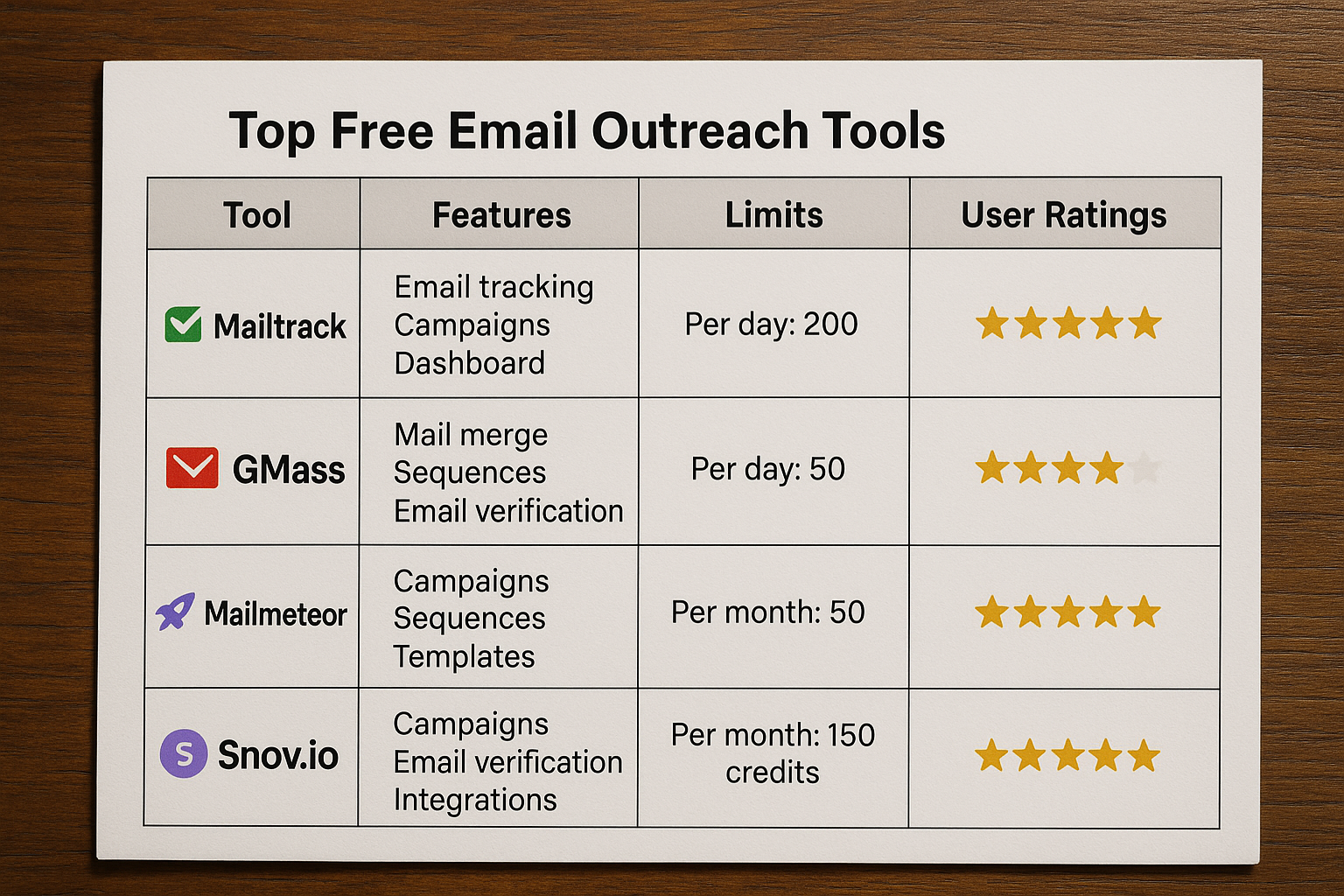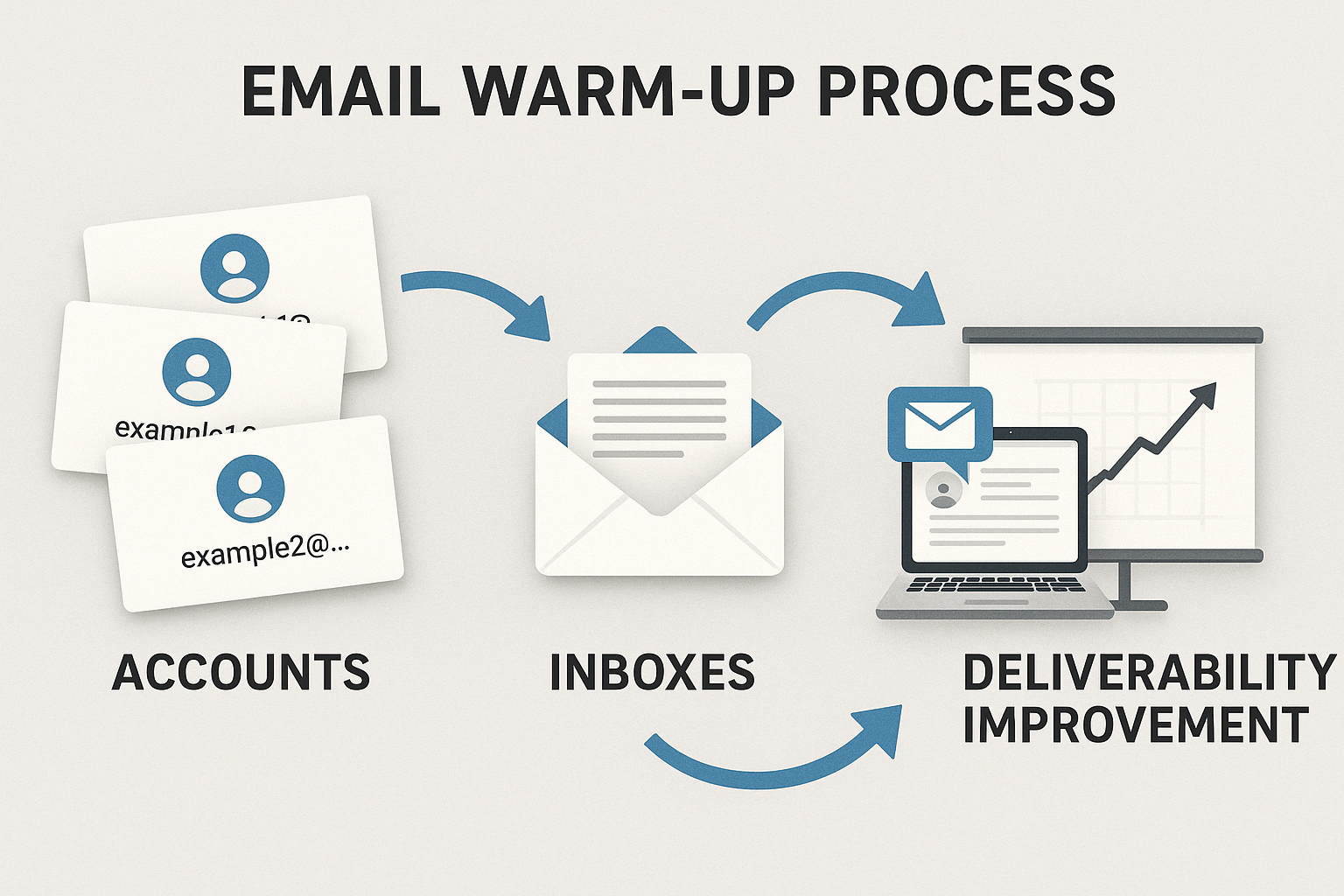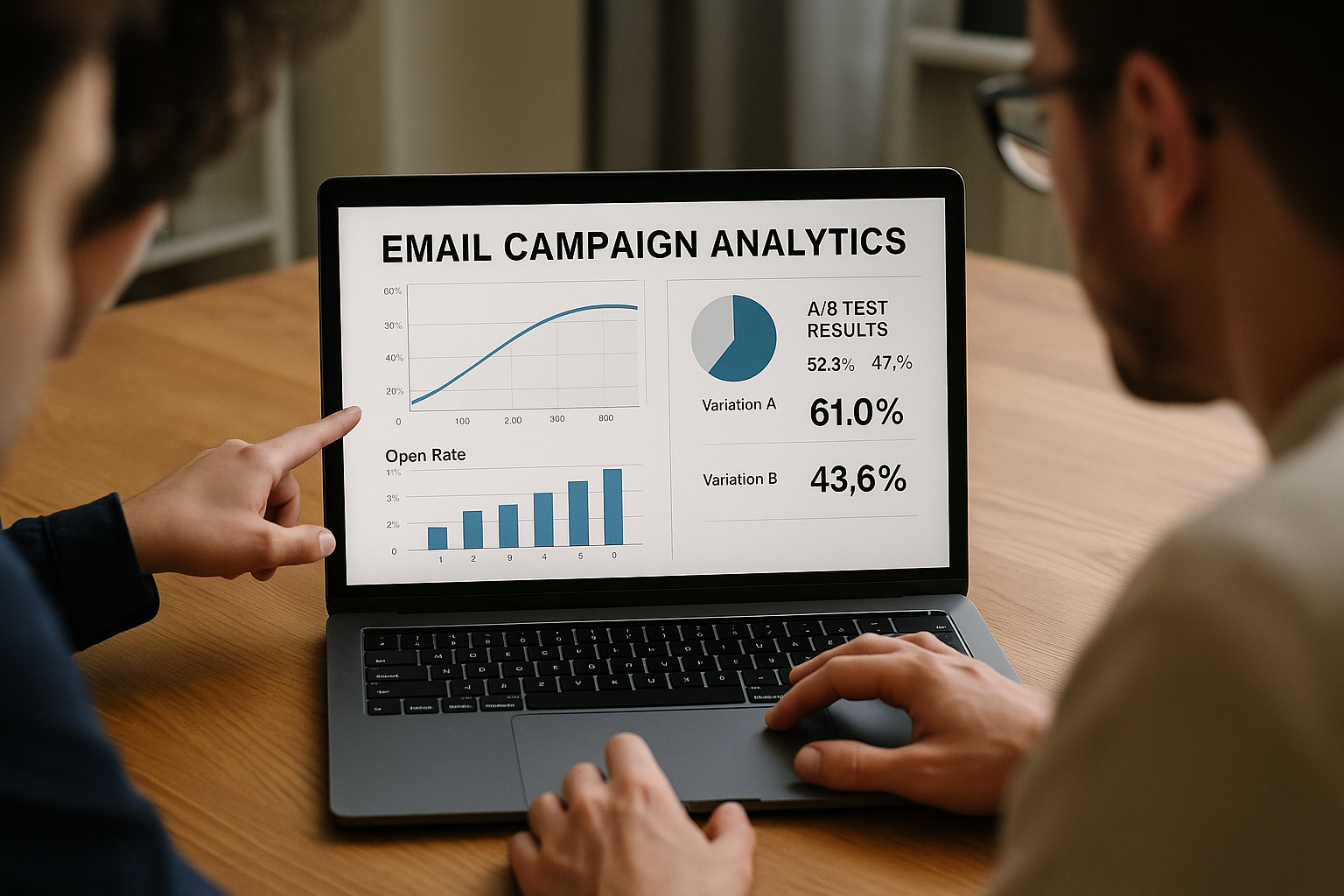Everyone knows email outreach is a powerhouse for building relationships and driving new business leads.
But what exactly are free email outreach tools—and how do you pick the right one?
In this cheatsheet, you’ll get a comprehensive, up-to-date list of the best free email outreach tools, plus expert insights on using them for maximum results.
Some are automation machines that let you schedule, personalize, and follow up without lifting a finger.
Some are hidden gems with surprisingly advanced analytics—totally free.
Some are built for scale, letting you reach thousands with a human touch.
Some are ultra-simple, perfect for solopreneurs and startups just getting started.
Some will help you dodge the spam folder and land every message in the inbox.
Let’s dive right in.
Why Email Outreach—and Free Tools—Matter in 2025
Email outreach is still one of the highest ROI channels in digital marketing. Think about this: for every $1 spent, email delivers an average return of $40. That’s not just hype—it’s the reality for brands, agencies, and solo founders alike.
But here’s the catch: most small businesses, nonprofits, and bootstrapped startups can’t afford high-end, enterprise-grade email platforms. That’s where free email outreach tools come in, putting the same powerful features into everyone’s hands (source).
Free tools let you:
- Automate follow-ups and never miss a lead.
- Personalize emails at scale—no more copy-paste tedium.
- Track opens, clicks, replies, and optimize with real data.
- Integrate with your CRM or Google Sheets in seconds.
- Test, iterate, and improve—without financial risk.
Once you outgrow a free tier, you’ll have the data to justify the upgrade. Until then, these tools are your secret weapon.

What to Look for in Free Email Outreach Tools
Great email outreach isn’t about blasting generic messages. The best free tools empower you to:
- Automate multi-step sequences: Drip campaigns, conditional triggers, and scheduled follow-ups.
- Personalize with dynamic content: Use tokens for name, company, or even custom fields. Advanced platforms let you show entire blocks of content based on user data.
- Access actionable analytics: Open, click, and reply rates, bounce tracking, and device reports. Visual dashboards help you pinpoint what’s working—and what’s not.
- Integrate with your stack: Look for tools that natively connect to Google Sheets, HubSpot, Salesforce, Zapier, or your CRM of choice.
- Stay deliverable: Authentication (SPF, DKIM, DMARC), domain warm-up, and spam testing options.
- Support collaboration: Multi-user access, cloud-based templates, and sharing options for teams.
- Offer a clean, intuitive UI: Even the best features are useless if the tool is clunky or confusing.
The 2025 Cheatsheet: Best Free Email Outreach Tools
Below you’ll find a detailed breakdown of the top free email outreach tools for every use case—ranked and reviewed based on real-world testing, expert feedback, and feature depth. Every tool here is either completely free or offers a robust free tier.
1. MailerLite
Best for: Advanced automation and segmentation on a generous free plan.
MailerLite gives you up to 1,000 subscribers and 12,000 emails/month for free. Unlike many competitors, even the free plan includes advanced automation workflows, powerful segmentation, and a clean, drag-and-drop editor. You can add dynamic content blocks (like countdown timers, product cards, or video embeds), and segment your audience for ultra-targeted campaigns. MailerLite also integrates with Zapier, so you can automate list building or sync purchases from your store. One limitation: no pre-made templates on the free plan, but content blocks make up for it. See why MailerLite tops Zapier’s list of free email marketing software.
2. Brevo (formerly Sendinblue)
Best for: All-in-one outreach, CRM, and sales engagement.
Brevo lets you manage up to 300 emails per day and 100,000 contacts for free. It includes a full-featured CRM, drag-and-drop email builder, and robust automation flows—even on the free plan. Its standout ability is combining email, SMS, WhatsApp, and even Facebook ad campaigns from one place. You get audience segmentation, A/B testing, and pre-built workflows for common goals. The one catch: a strict daily send limit. However, you can buy extra credits as needed. Read the full review on Zapier.
3. Sender
Best for: Generous free limits and automation for growing lists.
Sender stands out by giving you up to 2,500 subscribers and 15,000 emails/month—completely free. You get full access to automation, nine pre-built workflows (e.g., webinar reminders, abandoned cart recovery), and audience segmentation. Integrations with Shopify and WordPress make it a solid choice for eCommerce. The editor is basic, but functional. Detailed Sender review on Zapier.

4. Kit (formerly ConvertKit)
Best for: Creators, digital products, and massive subscriber lists.
Kit is the most generous on this list: unlimited sends for up to 10,000 subscribers—for free. It’s built for creators, with native landing pages, forms, and a Creator Network to help you grow your list. Segmentation and basic automation are included, but free users can only build one sequence and one automation. If you’re sending mostly newsletters and need scale, Kit is a clear winner. More details on Kit’s features.
5. Loops
Best for: SaaS companies and automation-first workflows.
Loops is designed for SaaS and product-led businesses: you get unlimited automation workflows even on the free plan. With 1,000 contacts and 4,000 email sends/month, plus 17 pre-built loops (welcome, upgrade nudges, engagement reminders), it’s a solid pick for product teams. The UI is minimal and clean, but note: only plain text templates are available, so it’s not for those wanting fancy visuals.
6. EmailOctopus
Best for: Simplicity, audience segmentation, and affordable upgrades.
EmailOctopus gives you 2,500 subscribers and 10,000 monthly emails for free. Access most features (including three automation workflows, basic segmentation, and a drag-and-drop editor). If you need to scale, paid plans are among the most affordable. Some limitations in advanced automations, but great for lean teams.
7. Audienceful
Best for: Minimalist UI and Notion-style editing.
Audienceful is for those who want email marketing without the bloat. The free plan includes 1,000 contacts, two users, segmentation, and a unique, Notion-inspired editing experience. Custom themes and easy mobile previews make it a breeze to use—just don’t expect pre-made templates.
8. Omnisend
Best for: eCommerce automation and pre-built flows.
Omnisend's free plan is limited to 250 subscribers and 500 emails/month, but it packs in advanced features: 20+ pre-built eCommerce flows, rich segmentation, and A/B testing. Includes over 250 great templates and content blocks. Built for online stores, it’s the top free choice in its category. See why Omnisend is recommended for eCommerce.
9. Mailchimp (Free Plan)
Best for: Beginners and drag-and-drop campaign creation.
Mailchimp’s free plan has been pared down to 500 subscribers and 1,000 emails/month, but it still offers a user-friendly interface, beautiful templates, and basic automations. It’s a good starting point—just know you’ll quickly hit the free tier’s limits. See why Mailchimp’s free plan is less competitive in 2025.
10. GMass / YAMM (Yet Another Mail Merge)
Best for: Mail merge and Gmail-powered campaigns.
GMass and YAMM both let you send personalized campaigns directly from your Gmail inbox. Free tiers allow up to 50 emails/day, mail merge from Google Sheets, and basic tracking. Ideal for solo founders, freelancers, or anyone already living in Google Workspace.
11. Mailjet, Systeme.io, Zoho Campaigns, and More
Other tools like Mailjet (1,500 subscribers/6,000 emails), Systeme.io (2,000 subscribers/unlimited emails), and Zoho Campaigns (2,000 subscribers/6,000 emails) are also worth a look. Each has unique features and limitations—compare carefully for your needs.
12. Instantly.ai (for Email Warm-Up and Deliverability)
Best for: Ensuring your cold outreach lands in the inbox, not spam.
While not a classic campaign tool, Instantly.ai offers a free trial for automated email warm-up—a CRUCIAL step if you’re doing cold outreach at scale. It uses a pool of real accounts to gradually increase your sending volume, auto-replies to messages, and pulls your emails out of spam folders, teaching providers that you’re a trustworthy sender. Set up takes minutes, and you can add unlimited accounts under one plan. Learn more from Instantly’s official site.

How to Choose the Right Free Email Outreach Tool
Ready to pick your platform? Here’s how to make the smartest choice:
- Estimate your volume: How many unique contacts will you email per month? How many total sends? Don’t get throttled unexpectedly—always pick a tool that fits your list size and growth plans.
- List your must-have features: Drip sequences? CRM integration? Landing pages? Some free plans restrict key features—don’t trade unlimited sending for missing automation.
- Test usability: Some tools are beginner-friendly, others are power-user focused. Try a quick campaign build, or run through their onboarding (most offer it free).
- Consider integrations: If you live in Google Workspace, tools like GMass or YAMM are perfect. Running eCommerce? Lean toward Omnisend or Sender. Need Zapier automation? Confirm it’s supported.
- Think about scaling: If you expect rapid growth, check upgrade pricing and migration options.
Best Practices for Free Email Outreach Success
Tool in hand? Here’s how to maximize your results—without burning your sender reputation or ending up in the spam folder.
Build and Segment Your List Responsibly
Start with a clean, permission-based list. Segment by role, industry, or engagement. Quality trumps quantity—targeted, relevant emails get opened and replied to.
Personalize and Write Compelling Copy
Use dynamic fields for names, company, or pain points. Subject lines should speak directly to the recipient. Body copy should be concise, value-driven, and end with a clear CTA. Including case studies (with real numbers and context) can boost replies by 1–2% (see cold email case study strategies).
Timing, Sequences, and Follow-Ups
Test send times (morning vs. afternoon) and always schedule at least two follow-ups, three to five days apart. Automation ensures every lead gets nurtured.
Maintain Deliverability
Authenticate your domain with SPF, DKIM, and DMARC. Use a tool like Instantly.ai to warm up new accounts and avoid spam traps. Remove invalid addresses and monitor bounce rates.
Test, Measure, and Iterate
Use built-in analytics to tweak subject lines, send times, and content. Run A/B tests—many free tools support this even on basic plans. Double down on what works.

Advanced Tips: Power Up Your Outreach
- Integrate with your CRM: Sync contacts, automate deal creation, and track every reply for seamless sales follow-up.
- Use external template builders: Want pro-level designs? Try free HTML template builders like Stripo, Beefree, or Tabular. Stripo, for example, offers 1,500+ responsive templates and direct exports to 70+ email service providers—making your outreach stand out (full review here).
- Leverage AI for copywriting: Many tools now integrate AI to help you craft personalized intros, subject lines, and even dynamic content blocks.
- Warm up new domains: Never start cold outreach from a brand-new domain. Use tools like Instantly.ai for two weeks to land in inboxes, not spam.
- Monitor deliverability tools: Services like GlockApps or Litmus help you test how your emails render and whether they pass spam filters before you hit send (more deliverability resources).
Action Plan: Launch Your Free Email Outreach Campaign Today
- Define your goal and target persona. Who are you reaching, and what do you want them to do?
- Pick your tool. Compare the free tier limits and features from this guide.
- Authenticate your domain and warm up your email. Use Instantly.ai or a similar tool if you’re doing cold outreach.
- Import and segment your list. Use dynamic fields for personalization.
- Build your outreach sequence. Include at least two follow-ups and personalize each step.
- Monitor analytics and iterate. Use open, click, and reply rates to improve every campaign.
By following these steps—and using the right free email outreach tools—you can launch a professional, scalable outreach campaign without spending a dime.
Conclusion: The Free Email Outreach Tools Advantage
In 2025, the playing field has never been more level. From powerhouses like MailerLite and Brevo to workflow-focused upstarts like Loops or automation helpers like Instantly.ai, you have everything you need to grow—without a big budget. The real secret? Pick a tool that fits your workflow, stay data-driven, and always be improving. Outreach is about building relationships, not just blasting messages. Use these tools wisely, and the results will follow.
Ready to start? Download this cheatsheet, choose your tool, and see how far free can take you.